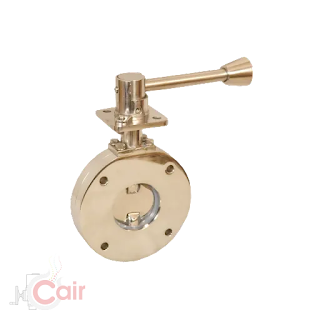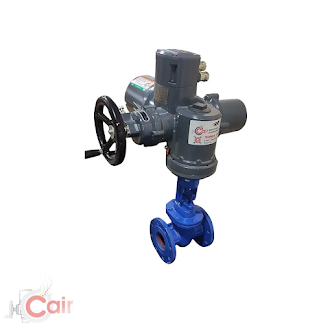Choosing the Right UPVC Ball Valve: Factors to Consider
Ball valves are crucial components in fluid control systems, offering efficient shut-off capabilities and precise flow control. Here's a brief overview of their distinctive features:
Design: Ball valves utilize a spherical disc (the ball) to regulate flow through a hollow, perforated sphere.
Operation: They employ a quarter-turn mechanism for quick and easy on/off control, ensuring swift response in critical situations.
Versatility: Ball valves are versatile, suitable for a range of applications, from residential plumbing to industrial processes.
Durability: The design minimizes wear and tear, enhancing the valve's longevity and reliability.
Sealing: The tight sealing mechanism provides excellent leak prevention, crucial for maintaining system integrity.
When selecting valves for fluid control systems, the significance of a reliable option cannot be overstated. The UPVC ball valve stands out, offering these features along with the added benefit of being corrosion-resistant, making it an ideal choice for diverse industries.
Size and Compatibility: Selecting the Right Dimensions
When choosing a UPVC ball valve, ensuring the right size and compatibility is crucial for optimal functionality. Here's a guide to help you make an informed decision:
Size Matters: Consider the pipe size and flow requirements. Choose a UPVC ball valve that aligns with the diameter of your pipes to ensure efficient fluid control.
Material Compatibility: Evaluate the compatibility of the UPVC ball valve with the fluids it will handle. UPVC (Unplasticized Polyvinyl Chloride) is known for its chemical resistance, making it suitable for a variety of applications.
Pressure Rating: Check the pressure rating of the valve to ensure it can withstand the operating conditions in your system without any compromise in performance.
End Connections: Confirm the end connections of the valve, ensuring they match your existing piping system for a seamless installation.
Selecting the right dimensions in a UPVC ball valve guarantees a reliable and long-lasting solution for fluid control in your system. Whether it's for industrial, residential, or commercial use, the proper size and compatibility are paramount for a leak-free and efficient operation.
Pressure Ratings: Matching UPVC Ball Valves to System Requirements
Choosing the right UPVC ball valve with the appropriate pressure rating is crucial for ensuring the optimal performance and longevity of your piping systems. Here's a quick guide to help you make informed decisions:
Identify System Pressure: Determine the operating pressure of your fluid or gas system.
Understand UPVC Ball Valve Ratings: UPVC ball valves come with specific pressure ratings; familiarize yourself with these to avoid system failures.
Consider Temperature: Evaluate the temperature conditions the valve will face, as it can impact its pressure-handling capabilities.
Account for Flow Rates: Assess the flow rates within your system to ensure the chosen UPVC ball valve can handle the volume without compromising performance.
Factor in Safety Margins: Allow for safety margins in pressure ratings to accommodate potential fluctuations and unexpected spikes.
Selecting the right UPVC ball valve ensures a reliable and durable solution for your system's unique requirements, promoting efficient fluid or gas control.
Temperature Tolerance: Crucial Considerations for Performance
Temperature tolerance is a paramount factor in the functionality and longevity of various products and systems, particularly those operating in demanding environments. Here's why it's crucial to consider temperature tolerance for optimal performance:
Material Integrity: Extreme temperatures can compromise the structural integrity of materials, leading to deformation, weakening, or failure.
Operational Efficiency: Temperature fluctuations can affect the efficiency of mechanisms and processes, impacting overall performance.
Longevity: Products designed with appropriate temperature tolerance can withstand harsh conditions, extending their lifespan.
Safety: Maintaining temperature within safe limits is essential to prevent accidents or malfunctions.
Compatibility: Matching temperature tolerance with operational requirements ensures compatibility with surrounding components and systems.
When selecting components like the UPVC ball valve, understanding its temperature tolerance ensures reliable operation within specified ranges, enhancing efficiency and durability in diverse applications.
End Connections: Navigating Threaded, Socket, and Flanged Options
In the world of valves, choosing the right end connections is crucial for optimal performance and compatibility. Here's a concise guide to threaded, socket, and flanged options:
Threaded Connections:
Ideal for smaller-sized valves and low-pressure applications.
Provide ease of installation and maintenance.
Commonly used in residential plumbing and light industrial settings.
Socket Connections:
Offered in both solvent cement and fusion-weld options.
Suited for medium to high-pressure systems.
Provide enhanced strength and leak resistance.
Flanged Connections:
Designed for high-pressure applications and larger-sized valves.
Enable easy alignment and connection to pipes.
Common in industrial settings and critical pipelines.
Remember, selecting the right end connection depends on factors like pressure, pipe size, and application requirements. Whether it's a UPVC ball valve or any other type, compatibility is key for optimal performance and durability.



Comments
Post a Comment